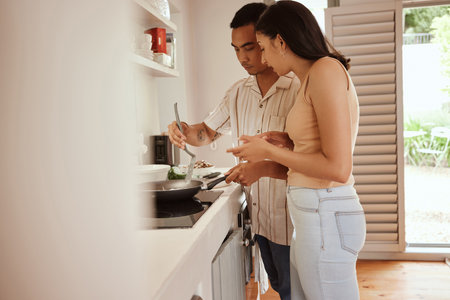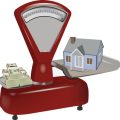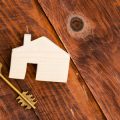1. Skipping Proper Surface Preparation
One of the most common and costly mistakes when refacing kitchen cabinets is skipping proper surface preparation. It might seem tempting to jump straight into painting or applying veneer, especially when youre eager to see results. But failing to clean, sand, or prime your cabinet surfaces can cause big problems down the line—like peeling paint, bubbling veneer, or poor adhesion that leads to a shorter lifespan for your cabinet finish.
Why Surface Prep Matters
Kitchen cabinets are exposed to grease, steam, and food splatters daily. If you dont remove these residues before applying new finishes, the new materials won’t stick properly. Sanding helps smooth out imperfections and creates a texture that allows paint or veneer to bond better. Priming seals the surface and ensures even color application.
Basic Steps for Proper Surface Preparation
| Step | Description |
|---|---|
| Cleaning | Use a degreaser or mild soap to remove oils, grime, and residue from all cabinet surfaces. |
| Sanding | Lightly sand the cabinet doors and frames with fine-grit sandpaper (around 120–150 grit) to roughen the surface. |
| Priming | Apply a high-quality primer suitable for wood or laminate to ensure good adhesion for paint or veneer. |
Pro Tip:
Don’t rush the drying time between each step. Let each layer—especially primer—dry completely before moving on. This helps prevent bubbling or peeling later on.
Avoid This Mistake By:
- Setting aside enough time for prep work
- Using the right tools like sanding blocks and tack cloths
- Choosing high-quality cleaning products and primers designed for kitchen environments
Taking shortcuts during prep might save time in the moment, but it often leads to more work (and costs) down the road. A little extra effort up front will help your refaced cabinets look better and last longer.
2. Choosing the Wrong Materials
When refacing your kitchen cabinets, picking the right materials is key to getting a look that lasts. It might be tempting to cut costs by using low-quality veneers, cheap paint, or bargain-bin hardware, but this can backfire quickly. These materials often wear out fast, peel, chip, or just make your kitchen look less polished.
Why Material Quality Matters
Your kitchen is one of the most used rooms in your home. That means cabinet surfaces are constantly exposed to heat, moisture, grease, and daily wear and tear. If you go with subpar materials, you may find yourself needing repairs—or even another reface—sooner than expected.
Common Material Options and How They Compare
| Material | Pros | Cons |
|---|---|---|
| Plywood Veneers | Durable, resists warping, holds finishes well | Slightly more expensive than MDF |
| MDF with Laminate | Smooth finish, budget-friendly | Less durable, can swell if exposed to water |
| Solid Wood Doors | High-end look, long-lasting | Costly and may expand/contract with humidity |
| Acrylic Finishes | Sleek modern appearance, easy to clean | Prone to scratching if not handled carefully |
Match Materials to Your Lifestyle
If you have kids or cook frequently, go for sturdy options like plywood cores and high-quality laminates or wood veneers. On the other hand, if your kitchen is lightly used or staged for resale, mid-range materials might do the trick while keeping costs down.
A Quick Tip:
Your cabinet hardware matters too! Dont overlook hinges and handles—cheap ones can break easily or make doors hang unevenly. Choose hardware that complements your design and stands up to daily use.
The bottom line? Invest in materials that balance style, durability, and your homes overall value. Itll pay off in the long run with a kitchen that looks great and functions well for years.

3. Ignoring the Importance of Accurate Measurements
One of the most common and costly mistakes when refacing kitchen cabinets is getting the measurements wrong. It might seem like a small detail, but even a fraction of an inch can cause major problems. Incorrect measurements can lead to mismatched cabinet doors and drawer fronts, making your kitchen look uneven and unprofessional. Worse yet, it can impact how well your cabinets function—doors may not close properly, or drawers might stick.
Before you order any materials or start removing old cabinet faces, take the time to measure every component carefully. That includes the width and height of each cabinet box, as well as the size and placement of hinges, drawer slides, and handles. Its also a good idea to measure twice—or even three times—to be sure everything lines up correctly.
Common Measurement Mistakes to Avoid
| Mistake | What Can Go Wrong |
|---|---|
| Measuring only one side of the cabinet | Cabinets may not be perfectly square; both sides need to match |
| Forgetting to account for hardware space | Doors or drawers may hit handles or not open fully |
| Not checking level surfaces | Slanted floors or walls can throw off alignment |
| Using old or inaccurate measuring tools | Small errors add up quickly across multiple cabinets |
Tips for Getting It Right
- Use a reliable tape measure and a level for accuracy
- Create a detailed sketch with labeled dimensions
- Measure each cabinet individually—even if they look the same size
- If youre unsure, consider hiring a professional to double-check your work
A little extra time spent on measuring can save you from expensive fixes and frustration later on. In cabinet refacing, precision really does pay off.
4. Overlooking Hardware and Hinge Compatibility
When refacing your kitchen cabinets, its easy to get caught up in the style and color of the new doors and drawer fronts—but dont forget about the small yet essential parts: your hardware and hinges. Not all hardware and hinges are compatible with refaced cabinets, especially if youre keeping the original cabinet boxes.
Why Compatibility Matters
If you choose new doors that are a different thickness or made from a different material than your old ones, your existing hinges might not fit correctly. Similarly, handles and knobs may not align properly with pre-drilled holes or may require adjustments that could damage your new doors. Choosing the wrong components can lead to doors that don’t close properly, drawers that stick, or even long-term wear issues.
Common Issues You Might Encounter
| Issue | Description | Potential Solution |
|---|---|---|
| Mismatched hinge type | Your new cabinet doors may not support the same hinge style as your original ones. | Select hinges designed for the door overlay or inset style you’re using. |
| Screw hole misalignment | The new hardware doesn’t line up with existing screw holes. | Use filler putty on old holes and drill new ones to match the hardware layout. |
| Differing door thickness | Your new doors are thicker/thinner than the originals, affecting hinge performance. | Select adjustable hinges or consult manufacturer specs before purchasing. |
| Aesthetic mismatch | The finish or style of hardware doesn’t complement your refaced cabinets. | Select coordinating finishes (e.g., brushed nickel, matte black) to match your design theme. |
Tips for Getting It Right
- Bring samples: Take an old door and piece of hardware with you when shopping for replacements to check compatibility on-site.
- Treat hinges like furniture joints: They need to be sturdy, smooth-operating, and aligned perfectly—don’t skimp here.
- If in doubt, ask: Many home improvement stores have experts who can help match hardware types or suggest suitable alternatives based on your cabinet’s construction.
- YouTube is your friend: There are plenty of visual guides showing how different hinge types work—great if youre DIY-ing the job.
A successful cabinet refacing project depends just as much on function as it does on form. Taking the time to double-check that your hardware and hinges are fully compatible with your refaced cabinets can save you major headaches down the road—and make sure everything opens, closes, and looks just right.
5. Underestimating the Time and Labor Involved
Refacing cabinets isn’t just a quick weekend project. It requires planning, precision, and patience. One of the most common mistakes homeowners make is thinking they can knock it out in a day or two. The truth is, even with experience and the right tools, cabinet refacing takes time.
If you’re doing it yourself, you’ll need to account for several steps: removing old doors and hardware, prepping the surfaces, applying veneer or laminate, installing new doors and drawers, and finishing touches like handles or knobs. Each step has its own set of challenges, especially if your cabinets have odd dimensions or tricky corners.
Here’s a general breakdown of how long each stage might take:
| Task | Estimated Time (DIY) |
|---|---|
| Removing old cabinet doors and hardware | 2-4 hours |
| Sanding and surface preparation | 4-6 hours |
| Applying veneer or laminate | 6-10 hours |
| Installing new cabinet doors and drawer fronts | 4-8 hours |
| Attaching new hardware (knobs/handles) | 1-2 hours |
| Total Estimated Time | 17-30 hours |
If you hire professionals, the timeline may be shorter but still spans several days depending on the complexity of your kitchen layout and materials used. Either way, rushing through the process can lead to sloppy results—like misaligned doors, bubbles under veneer, or uneven finishes.
The key is to plan ahead. Make sure you’ve got all your materials ready before starting. Set realistic expectations for how long each phase will take, and don’t forget to factor in drying times for adhesives or paint if youre using them. By giving the job the time it deserves, youll end up with a kitchen that looks professionally done—even if you did it yourself.


